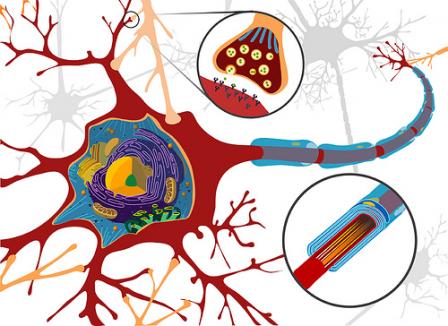"What makes you think that the brain created awareness?" the old man asks. "If anything, it is consciousness, what we call espiritu, that creates the brain." – Alberto Villoldo, Power Up Your Brain: The Neuroscience of Enlightenment
A stone does not obey a different set of rules from the atomic particles within it. – Lynne McTaggart, The Field
In calling for the reëmergence of natural time to overtake the artificial and mechanistic time under which we currently live, José Argüelles believes that the marriage of computer and telephone technologies “represents the final state of the Tower of Babel, and the completion of the process of globalization. The only place to go after the Internet is technology-free telepathy.”
And yet I wonder if the emergence of our massive participation in the cybersphere has to be understood not as The Shift’s antithesis, but as one of its vehicles. Is it possible that the cybersphere (the design element of the datasphere) is, like telepathy, a higher form of consciousness?
After all, the information being shared and consumed in this sphere is doubling every two years – a colossal 1.8 trillion gigabytes was created in 2011. That’s 57.5 billion 32-gigabyte iPads (stacked up this would be a mountain 25-times higher than Mt. Fuji – see the infographic here). That’s a lot of brain energy that humans are funneling into ones and zeros, creating an unprecedented force of networks and connections.
And whether or not 2012 will be the return of the moon cycle of time that will cause the datasphere and all its gadgets to be obsolete, the shift of consciousness that Argüelles spent his entire life writing and preparing us for certainly appears to be happening as communities and groups of people change their lifestyles and seek out collective solutions to problems that once were individualized. And the implementation and interpretation of data is central to the communication, research and design of many of these communities.
A good example is the communities being built around health and healing. In many countries health care is in crisis and millions live with no insurance except for their own inner resources. This crisis is peaking at the same time that the planet is suffering fever and chills (extreme temperature fluctuations and outbreaks). Suffering both in their environment and in their bodies, people turn to each other for solace and support. Diseases that once would have been considered private (like cancer or depression) are now being perceived as symptoms of a larger collective malaise. And people are sharing their symptoms with each other through the cybersphere, on websites and forums where information and anecdotal tips are passed back and forth. On websites such as CureTogether and Moodjam there is a sense of participating in collective healing – by tracking the data associated with symptoms and diseases, and sharing the results with large groups of people. It’s the energy of testimony carried through the electromagnetic pulse of cybersphere.
* * *
Of course it’s not all being used for the perpetuation of the greater good. Data is raw information that people collect and design into patterns in order to create images of truth, or authority over information. And there is no doubt but that data is being amassed and controlled by corporations (Google) and governments who have sinister or blandly evil designs. Data can be interpreted and designed to keep track of people’s spending habits, which can lead to trouble if those habits do not conform to social mores. And data can wield irreversible catastrophes on the environment to fuel global warming. Argüelles cites the BP “oil volcano” as perhaps the most exacting correlation of a data error unleashing a catastrophe. Certainly the foreclosure crisis is an example of data being blatantly twisted to create an illusory reality that destroyed many people’s lives.
But those who use the data didn’t create it for this purpose. Like the atomic particles at the heart of matter, data is generated as organically as cellular regeneration and as invisibly as cosmic strings. It’s in what Lynn McTaggert calls “the field” – a kind of blueprint with and from which we and all the things we create are constantly exchanging and absorbing information. The field is where data is imprinted, and it’s where data (which currently moves faster than the speed of light) is generated. Energy plus information is the interchangeable loop of existence.
Which means that data is not the enemy – but corporations who direct people to use it with non-life-affirming intentions certainly are.
And while we continue the fight against people who would use data to ruin the earth and our human resolve, we simultaneously use it to heal ourselves, or to find patterns in human behavior that ultimately could be used for social justice and survival.
* * *
The Quantified Self movement, for example, is a truly global movement in health care that brings together people who are tracking their personal data in order to cure themselves of everything from autoimmune diseases to alcoholism. There are currently QS meetups around the world, in every continent, where people get together and talk openly about their diseases and afflictions, telling their stories through the data they have collected on themselves. Self-tracking seems to allow people to see themselves as reflected in the data they generate which then allows them to be able to make changes in their lives based on the patterns that the data reveals.
Certainly some self-trackers are obsessively self-absorbed and perhaps not at all interested in the larger shifts of consciousness that the datasphere is connected to. (Many people who go to yoga classes and mediation retreats are equally self-absorbed.) But because data, once generated, begs to be shared, there's something about connecting with other people that signifies something larger than self-mastery.
In his pioneering analysis of “mirror neurons” V.S. Ramachandran (neuroscientist and professor and director of the Center for Brain and Cognition at UCSD) writes that "we are all merely many reflections in a hall of mirrors of a single cosmic reality." And I wonder if the hall of mirrors created by data is a quantum reality that reflects not just the designs of websites and bar graphs, but the neural networks of our brains as they connect to the neural networks in the brains of other people.
When you touch something hot there are motor receptor neurons in your brain that fire off, causing you to pull back your hand. And in basically the same area of the brain there is a subset of neurons called “mirror neurons” that fires when you see someone else touch something hot. And these neurons also fire when you see someone else dive into cool water, or touch another person. And if it's true that these mirror neurons "mirror" the actions of other people, this means that you (the observer) are experiencing what another person is doing – you are in their action.
But it’s not only about watching people in action. Ramachandran posits that mirror neurons are involved in understanding other people's feelings (empathy) and they have played a role in the development of human culture because it is through imitation and emulation that we are able to quickly evolve. (Watch this video for more info.)
The ebb and flow of data works in a similar way. Signals are fired which enter into the flow of information in the cybersphere. Your neurons fire to interpret these signals, designing them into meaning. When that design makes profound sense to another person and allows her to see patterns and systems at work that she hadn’t been able to see before, the patterns then take shape in multiple minds that now see things in a new way. And when the patterns and designs of information are related to health and productive change both internally (body/mind) and externally (ecosystem/world), a transmission of mirror neurons is activated at multiple levels of awareness: empathy and action, simultaneously.
If 2012 is about our potential to evolve as human beings in relation to the multiple and simultaneous spheres of earth energy, consciousness, psychic powers and planetary alignment, then it's important not to dismiss ways that all these spheres have potential connections to the datasphere. As a spillover of the collective unconscious, or vitally integrated into it, the datasphere needs to be understood as a regenerating force that can be redirected – away from profit and control and towards profound knowledge.
And it’s not simply a question of higher consciousness. As data-tracker and visual artist Laurie Frick said at a recent QS meetup, "We are in a position of acquiring more data than they are. Fight back." In aligning data with the world that we want to live in we are in a position to create and observe the data collected to sell products, sell ideologies and convince us we live in a world not of our choosing. They can see the patterns; we’re not supposed to. But that needs to be reframed.
Because if we, complex human organisms made of cells that are constantly translating and generating information that keeps us alive;
we, with brains of 100 billion neurons each making 1,000-10,000 contacts with other neurons (not to mention the contacts we make with other people’s neurons);
we, in whom the number of permutations and combinations of brain activity exceeds the number of elementary particles in the universe;
surely we are in position to take control of our data and refocus it into alignment with what Argüelles calls “a holonomic planetary culture.”
And while it is certainly possible that the technosphere will be reset by a solar flare that knocks satellites from their silent orbit, or is destroyed by some kind of epidemic virus that shuts down the Internet … it's also possible that none of this will happen.
And the datasphere that is a sphere of our consciousness will endure as our brains continue the work of expansion – whether it be into and around the zero point field or another potential we have yet to observe. And data is part of this field: an energetic force with the power to heal and the power to destroy.
Argüelles may be right that the machine, from its innermost recesses, has evolved a brain and nervous system of its own. But it’s not an evil design unless we perceive it to be so, unless we perceive the intersecting spheres of consciousness, and our participation in their evolution, to be passive.
* * *
Here are some interesting links to what I might call holistic data farming – using data for human and planetary coherence. Let’s work together to create a more comprehensive list:
The Quantified Self (Self Knowledge Through Numbers)
It’s possible that this movement will quickly be co-opted by corporate interests which will sadly remove the power of the movement (people getting together to share their change stories and struggles in a non-commercial space). But for now, it’s a fantastic occasion to meet up. Here’s a review of the recent conference in Amsterdam.
The concept of the million dollar block emerged in 1998, when researchers in New York City began mapping incarcerations block by block, creating a visual representation of the number of people on each block who were in prison. It’s a great example of taking data that has been analyzed over and over again and finding something in it that is new: zip codes. Sending resources to these areas becomes essential.
Asthmapolis
A project presented by Steve Dean that attaches sensors to the inhalers used by asthma patients when they have attacks that link to smartphones, which gather data on where and when they are used. Tracking this information over time helps patients identify the triggers that make their conditions worse.
A new installment in the Day in the Life series, calling for your participation.
An amazing visual artist who obsessively self-tracks, creates designs out of her data, and then creates architectural installations allowing her to inhabit her data as a structure.














